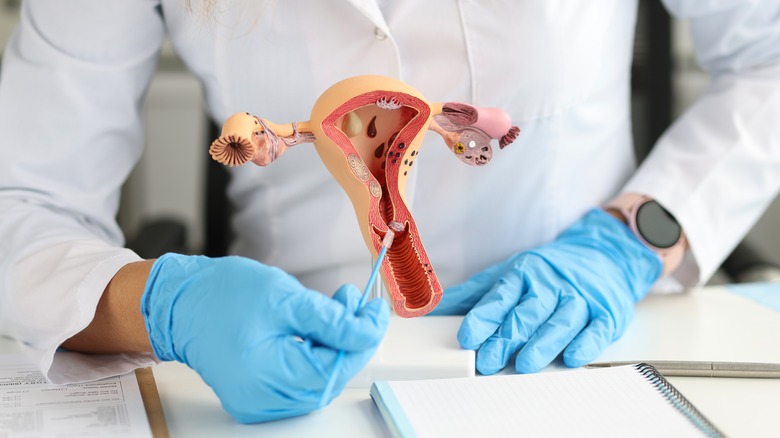What Is A Vaginal Cuff, And Why Is It Necessary After A Hysterectomy?
A hysterectomy is a surgical procedure in which the uterus, the reproductive organ where a baby grows during pregnancy, is removed (via Yale Medicine). In the United States alone, approximately 500,000 hysterectomies are performed each year.
Several types of hysterectomies exist, including radical, total, or partial, per Johns Hopkins University. Likewise, there are several reasons why a person may need a hysterectomy. These generally include uterine fibroids, endometriosis, uterine prolapse, cancer, and abnormal uterine bleeding, says the University. The type of hysterectomy performed and whether the ovaries and fallopian tubes are removed depends on the reason for the surgery, as well as other factors.
The procedure is usually performed under general anesthesia. It may be done as an open surgery, or as a minimally invasive procedure through small incisions or the vagina, explains Johns Hopkins University. In some cases, a vaginal cuff might be required after a hysterectomy — a procedure that comes with benefits and risks.
Why is a vaginal cuff necessary after a hysterectomy?
Overall, the vaginal cuff is an important aspect of a hysterectomy. It is a surgical term that refers to the end of the vagina after a total or radical hysterectomy (via Healthline). In a total hysterectomy, the entire uterus, including the cervix, is removed. The vaginal cuff is created by suturing the top part of the vagina, says Healthline. The purpose is to keep the vagina closed, per Dr. Mark Godat.
The recovery after a vaginal cuff hysterectomy can vary depending on several factors (such as the patient's overall health) since everyone heals differently. Generally, most patients can return to their normal activities within as few as eight weeks after the procedure (via Healthline). If the pain is unbearable, your doctor might prescribe medications to reduce pain and prevent infection.
It's important to discuss the hysterectomy procedure with your doctor and any questions or concerns you may have. Your doctor can give you more specific information and what you can expect during your recovery based on your circumstances.
What are the risks of having a vaginal cuff?
A vaginal cuff hysterectomy, like any surgical procedure, has potential risks and complications. However, most people have a smooth recovery. In 1% of cases, a vaginal cuff tear, also known as a vaginal cuff dehiscence, per this 2014 article published in SASGOG's Pearls of Exxcellence. A vaginal cuff tear occurs in the tissue that closes the upper part of the vagina. Various factors increase the risk of this type of tear. They include weakened pelvic floor muscles, smoking, obesity, vaginal infections, and chronic constipation, says Medical News Today.
Symptoms of a vaginal cuff tear include pain in the pelvic region, vaginal bleeding, and an uncomfortable feeling of pressure in the vaginal area. Treatment typically involves repairing the tear surgically. In addition to these risks, there might be other potential long-term effects of a vaginal cuff hysterectomy, which you should discuss with your doctor before undergoing the procedure.



